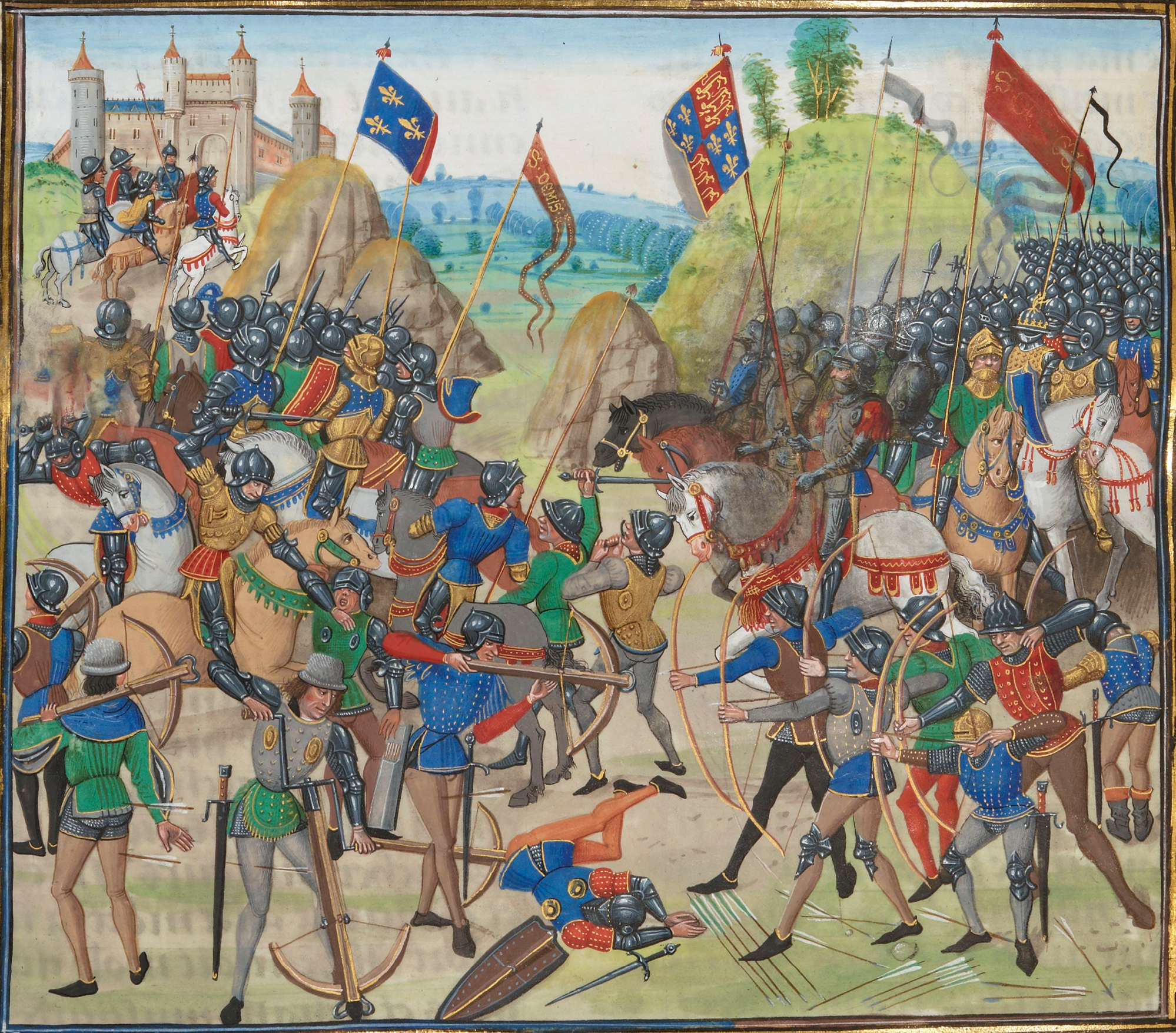
Battle of Crécy
The Battle of Crécy took place on 26 August 1346 in northern France between a French army commanded by King Philip VI and an English army led by King Edward III. The French attacked the English while they were traversing northern France during the Hundred Years' War, resulting in an English victory and heavy loss of life among the French.
"Crecy" and "Crécy" redirect here. For other uses, see Crecy (disambiguation).
The English army had landed in the Cotentin Peninsula on 12 July. It had burnt a path of destruction through some of the richest lands in France to within 2 miles (3 km) of Paris, sacking many towns on the way. The English then marched north, hoping to link up with an allied Flemish army which had invaded from Flanders. Hearing that the Flemish had turned back, and having temporarily outdistanced the pursuing French, Edward had his army prepare a defensive position on a hillside near Crécy-en-Ponthieu. Late on 26 August the French army, which greatly outnumbered the English, attacked.
During a brief archery duel a large force of French mercenary crossbowmen was routed by Welsh and English longbowmen. The French then launched a series of cavalry charges by their mounted knights. These were disordered by their impromptu nature, by having to force their way through the fleeing crossbowmen, by the muddy ground, by having to charge uphill, and by the pits dug by the English. The attacks were further broken up by the effective fire from the English archers, which caused heavy casualties. By the time the French charges reached the English men-at-arms, who had dismounted for the battle, they had lost much of their impetus. The ensuing hand-to-hand combat was described as "murderous, without pity, cruel, and very horrible." The French charges continued late into the night, all with the same result: fierce fighting followed by a French retreat.
The English then laid siege to the port of Calais. The battle crippled the French army's ability to relieve the siege; the town fell to the English the following year and remained under English rule for more than two centuries, until 1558. Crécy established the effectiveness of the longbow as a dominant weapon on the Western European battlefield.
Opposing forces[edit]
English army[edit]
The English army comprised almost exclusively English and Welsh soldiers, along with a handful of Normans disaffected with Philip VI and a few German mercenaries, the foreigners constituting probably no more than 150 in number.[39] The exact size and composition of the English force is not known. Contemporary estimates vary widely; for example Froissart's third version of his Chronicles more than doubles his estimate in the first.[40] Modern historians have estimated its size as from 7,000 to 15,000.[41] Andrew Ayton suggests a figure of around 14,000: 2,500 men-at-arms, 5,000 longbowmen, 3,000 hobelars (light cavalry and mounted archers) and 3,500 spearmen.[42] Clifford Rogers suggests 15,000: 2,500 men-at-arms, 7,000 longbowmen, 3,250 hobelars and 2,300 spearmen.[43] Jonathan Sumption, going by the carrying capacity of its original transport fleet, believes the force was around 7,000 to 10,000.[44] Up to a thousand men were convicted felons serving on the promise of a pardon at the end of the campaign.[45][46] Many of the English, including many of the felons, were veterans; perhaps as many as half.[47][48]
The men-at-arms of both armies wore a quilted gambeson under mail armour which covered the body and limbs. This was supplemented by varying amounts of plate armour on the body and limbs, more so for wealthier and more experienced men. Heads were protected by bascinets: open-faced iron or steel helmets, with mail attached to the lower edge of the helmet to protect the throat, neck and shoulders. A moveable visor (face guard) protected the face. Heater shields, typically made from thin wood overlaid with leather, were carried. The English men-at-arms were all dismounted. The weapons they used are not recorded, but in similar battles they used their lances as pikes, cut them down to use as short spears, or fought with swords and battle axes.[49][50][51][52]